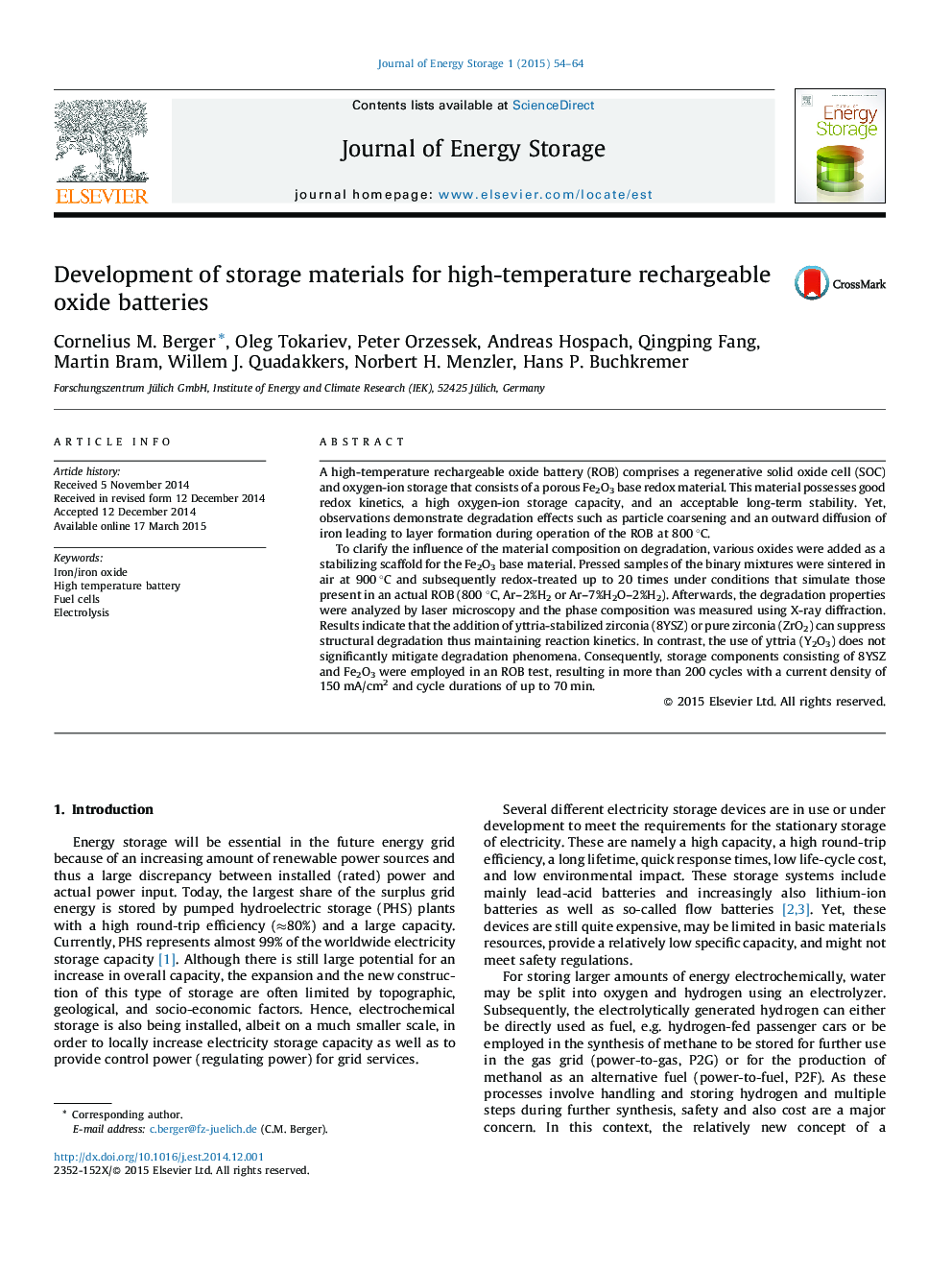| Article ID | Journal | Published Year | Pages | File Type |
|---|---|---|---|---|
| 1133144 | Journal of Energy Storage | 2015 | 11 Pages |
A high-temperature rechargeable oxide battery (ROB) comprises a regenerative solid oxide cell (SOC) and oxygen-ion storage that consists of a porous Fe2O3 base redox material. This material possesses good redox kinetics, a high oxygen-ion storage capacity, and an acceptable long-term stability. Yet, observations demonstrate degradation effects such as particle coarsening and an outward diffusion of iron leading to layer formation during operation of the ROB at 800 °C.To clarify the influence of the material composition on degradation, various oxides were added as a stabilizing scaffold for the Fe2O3 base material. Pressed samples of the binary mixtures were sintered in air at 900 °C and subsequently redox-treated up to 20 times under conditions that simulate those present in an actual ROB (800 °C, Ar–2%H2 or Ar–7%H2O–2%H2). Afterwards, the degradation properties were analyzed by laser microscopy and the phase composition was measured using X-ray diffraction. Results indicate that the addition of yttria-stabilized zirconia (8YSZ) or pure zirconia (ZrO2) can suppress structural degradation thus maintaining reaction kinetics. In contrast, the use of yttria (Y2O3) does not significantly mitigate degradation phenomena. Consequently, storage components consisting of 8YSZ and Fe2O3 were employed in an ROB test, resulting in more than 200 cycles with a current density of 150 mA/cm2 and cycle durations of up to 70 min.
